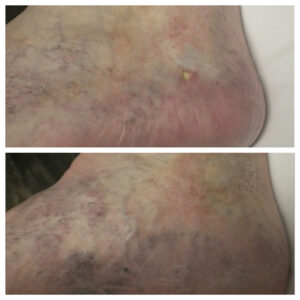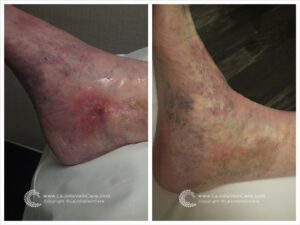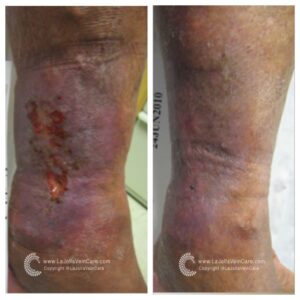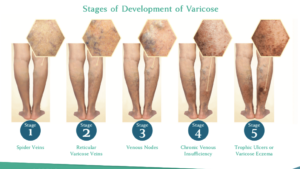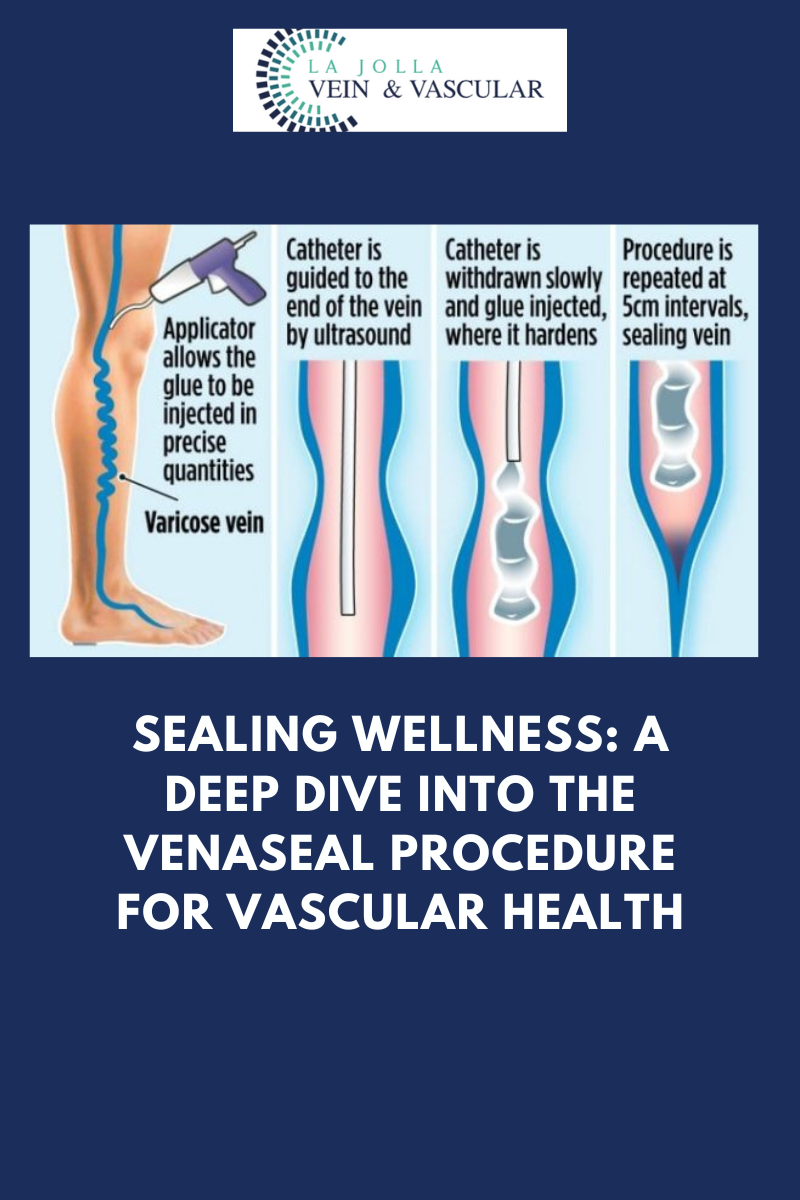Chronic venous insufficiency and leg ulcers

Chronic venous insufficiency (CVI) is an inflammatory condition caused by long standing, untreated venous reflux disease that causes leg ulcers. Commonly, venous reflux disease causes a collection of symptoms such as leg swelling, heaviness, fatigue and varicose veins. But, over time, when blood is no longer circulating properly in the leg veins, skin changes can also appear. When skin changes appear, this is termed, chronic venous insufficiency (CVI). Venous stasis is another term used for this condition.
Chronic inflammation from CVI causes the skin around the ankles to darken, become dry, itchy, and firm. In severe cases, the skin can start to break down and ulcerate. The leg ulcers or (wounds) occur in the inner or outer ankle and is also referred to as a stasis ulcer or venous ulcer.
Venous stasis skin changes associated with venous insufficiency include:
- Darkening of the skin along the ankles
- Itching and dry skin around the ankles (venous eczema)
- Development of wounds around the ankles, called venous leg ulcers
HOW IS CVI TREATED?
The treatment of CVI cannot reverse the skin changes but it can prevent it from worsening and ulceration. In our experience, treatment of underlying venous reflux reduces the inflammatory changes and the skin may become less itchy and dry, but the permanent skin discoloration does not disappear. Treatment involves correction of the underlying venous reflux, which can help decrease leg ulcers.
HOW ARE LEG ULCERS TREATED?
Venous leg ulcers, depending on the severity, can be healed with a combination of correction of the underlying venous reflux, wound care clinic referral, and compression therapy. A detailed ultrasound will determine what specific treatment is needed depending on where the underlying reflux lies (for example, in the saphenous veins, perforator veins and tributaries). Deep vein reflux is also present in many individuals with ulcers.
